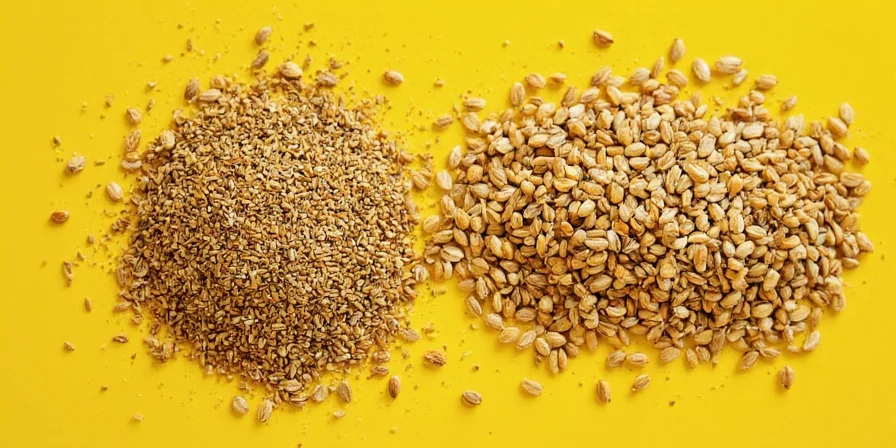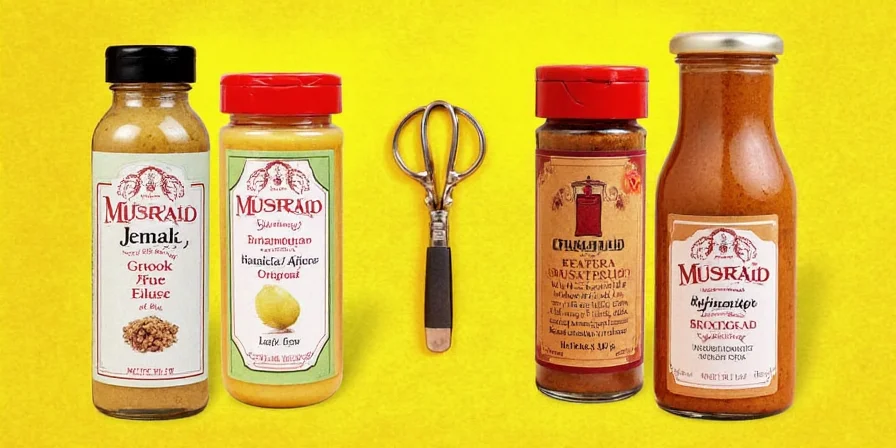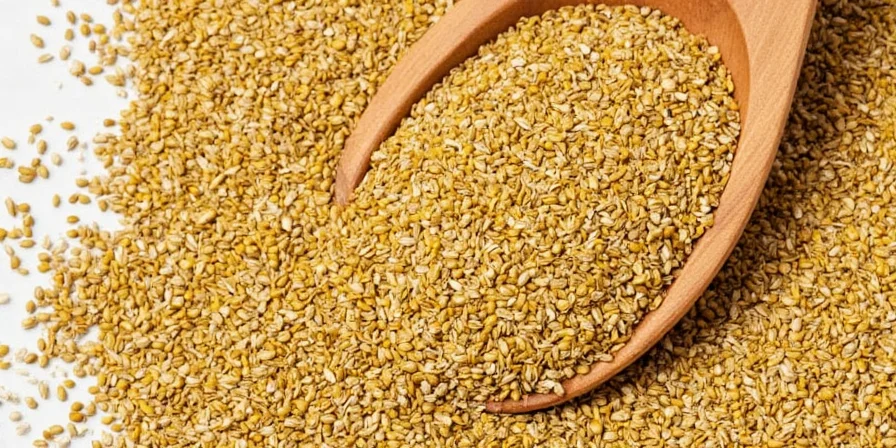When heating mustard seeds in oil, they should pop within 30-60 seconds at 325-350°F. If they're burning instead of popping, your oil's too hot; if they're not popping at all, it's too cool. The perfect popping happens when internal moisture turns to steam, rupturing the seed coat while activating flavor enzymes. This guide reveals exactly how to use mustard seeds properly - including temperature thresholds most home cooks miss, why certain oils work better, and quick fixes when things go wrong.
Table of Contents
- What Exactly Are Mustard Seeds and Why They Matter
- The Big Three: Types of Mustard Seeds (Quick Reference)
- Why Mustard Seeds Pop: The 30-Second Fix for Perfect Tempering
- Top 10 Mustard Seed Hacks That Actually Work
- Mustard Seed Pairings That Transform Dishes
- Mustard Seeds Around the World: What Cooks Actually Do
- Temperature Cheat Sheet: Stop Guessing, Start Perfecting
What Exactly Are Mustard Seeds and Why They Matter
Mustard seeds aren't just tiny spice particles - they're flavor capsules that release their magic through precise cooking techniques. When whole, they're mild and nutty. But when heated properly in oil, they pop and activate enzymes that create that signature sinus-clearing heat. Get the temperature wrong, and you'll either burn them (bitter taste) or miss the pop entirely (flat flavor). The secret? Oil between 325-350°F - hot enough to create steam pressure inside the seed, but not so hot that it destroys the flavor compounds.

The Big Three: Types of Mustard Seeds (Quick Reference)
Choosing the right seed type makes or breaks your dish. Here's what actually works in real kitchens:
| Variety | Best For | Pro Cooking Tip | Common Mistake to Avoid |
|---|---|---|---|
| Yellow (White) | American mustard, pickling | Use cold water extraction for milder flavor in dressings | Overheating - burns easily above 350°F |
| Brown | Dal, curries, Dijon mustard | Add to cold oil, then heat gradually for even popping | Adding liquid too soon - stops popping process |
| Black | South Indian tempering, chutneys | Toast 30 seconds before oil to enhance nuttiness | Using old seeds - loses popping ability after 6 months |

Why Mustard Seeds Pop: The 30-Second Fix for Perfect Tempering
Mustard seeds pop when internal moisture turns to steam at precisely 212°F, creating pressure that ruptures the seed coat. But here's what most recipes don't tell you: the oil must be between 325-350°F. Too cool (below 300°F), and they'll sputter but not pop. Too hot (above 375°F), and they'll burn in seconds.
The foolproof test: Drop one seed in hot oil. If it sinks then immediately rises and pops within 10 seconds - perfect. If it sinks and doesn't rise quickly, the oil's too cool. If it blackens instantly, the oil's too hot.
Real kitchen solution: Keep a candy thermometer handy, or use this visual cue - when oil shimmers uniformly but doesn't smoke, it's ready. For electric stoves (which retain heat), remove the pan from burner just before adding seeds.

Top 10 Mustard Seed Hacks That Actually Work
These tested techniques solve real cooking problems:
- The pop test - Always test oil temperature with one seed before adding the rest
- Moisture control - Pat seeds dry with paper towel if stored in humid environment
- No-pop emergency fix - Add 1/4 tsp water to pan to create instant steam pressure
- Burn prevention - For electric stoves, remove pan from heat just before adding seeds
- Long-lasting flavor - Store seeds in freezer to maintain popping ability for 2+ years
- Pickling secret - Crush 20% of seeds for controlled heat in pickles
- Too spicy fix - Add honey within 30 seconds of tempering to neutralize heat
- Even popping - Use cast iron pan for consistent temperature distribution
- Sticky pan solution - Add seeds to cold oil, then heat gradually
- Leftover seeds - Freeze unused portion immediately to preserve freshness

Mustard Seed Pairings That Transform Dishes
These combinations solve common flavor problems:
- Mustard + Yogurt - Neutralizes excessive heat while maintaining flavor (perfect for curry rescue)
- Mustard + Coconut Milk - Creates balanced heat in Thai and Indian dishes (add after tempering)
- Mustard + Lemon Juice - Brightens heavy dishes (add juice 1 minute after tempering)
- Mustard + Cumin - Prevents bitterness in lentil dishes (toast cumin first, then add mustard)

Mustard Seeds Around the World: What Cooks Actually Do
Field-tested techniques from professional kitchens:
- India: South Indian chefs add hing (asafoetida) IMMEDIATELY after mustard seeds pop - creates flavor synergy
- France: Dijon makers use verjuice (not vinegar) for consistent tang without overwhelming heat
- Middle East: Add mustard seeds to cold olive oil, then heat slowly for hummus seasoning
- Japan: Mix black mustard with sesame seeds for tempura dipping sauce (toasted together)

Temperature Cheat Sheet: Stop Guessing, Start Perfecting
Keep this visible in your kitchen:
- Under 300°F: Seeds won't pop properly - results in oily, bland flavor
- 300-325°F: Partial popping - use for delicate dishes needing subtle flavor
- 325-350°F (GOLDEN ZONE): Perfect popping - ideal for 95% of recipes
- 350-375°F: Rapid popping - use for bold flavors but risk of burning
- Over 375°F: Instant burning - discard and start over
Pro tip: For electric stoves (which stay hot), remove pan from burner just before reaching 325°F - residual heat will complete the process.
Frequently Asked Questions
Conclusion
Perfect mustard seed tempering isn't complicated - it's about controlling three variables: oil temperature (325-350°F), seed freshness, and timing. When you master these, you'll consistently achieve that perfect pop that releases maximum flavor without bitterness. Keep the temperature cheat sheet handy, use the pop test before adding your full seed quantity, and implement one hack from this guide in your next dish. You'll notice an immediate improvement in flavor depth that pre-ground mustard or careless tempering can't match. The difference between good cooking and exceptional cooking often comes down to these small, precise techniques - and now you have the exact temperature thresholds and practical fixes to get it right every time.











 浙公网安备
33010002000092号
浙公网安备
33010002000092号 浙B2-20120091-4
浙B2-20120091-4